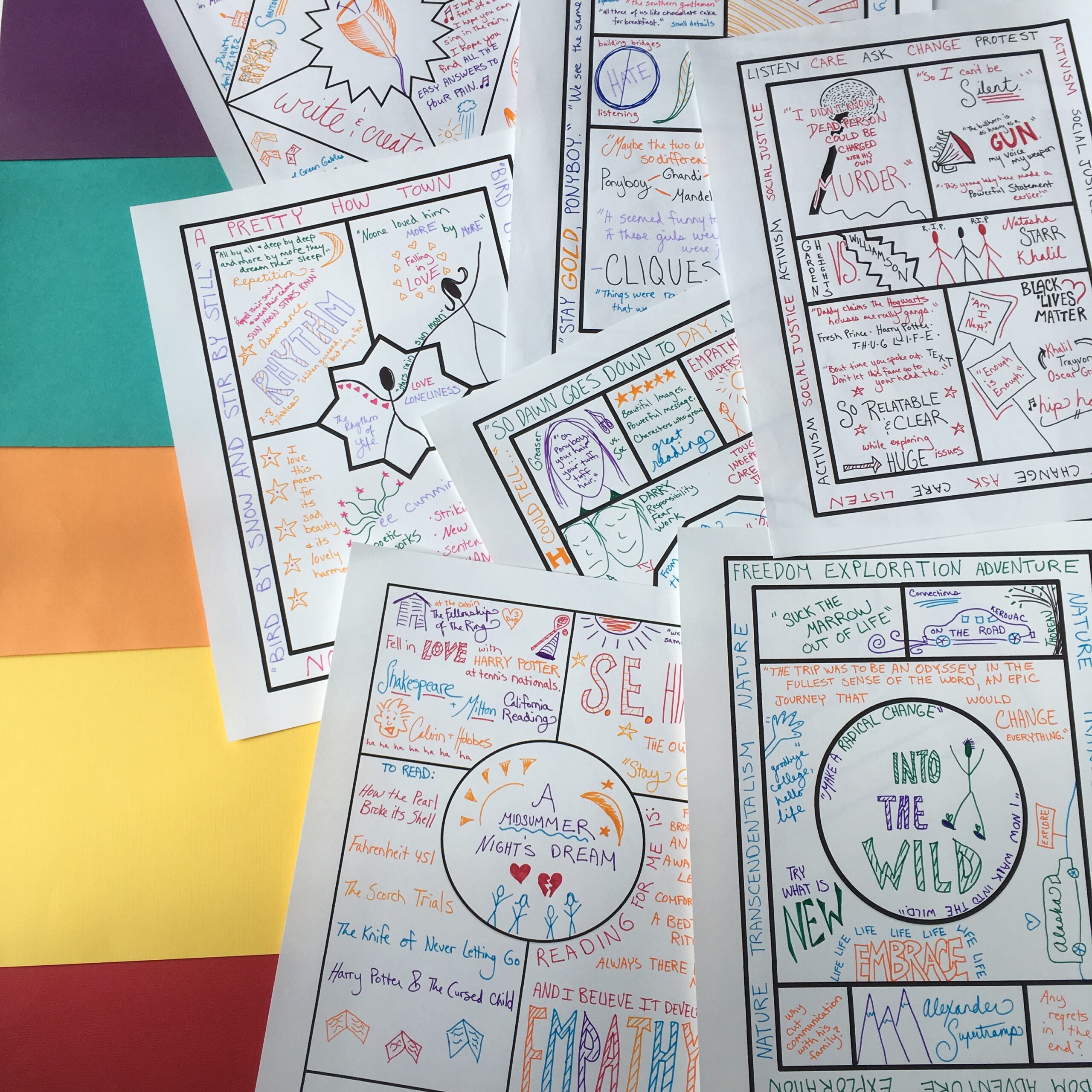
Don’t you love the concept of a makerspace? I like to picture a sunlit loft, filled with art supplies, pieces of wood, workbenches and computers, cozy overstuffed armchairs and live edge counters with high yellow stools. Maybe some George Winston playing through a speaker, a 3D printer humming in the background (do they hum? I’ve never actually seen one), and a box of rainbow-sprinkled donuts over by the fountain.
Yes, in my dream makerspace, there’s a fountain.
Now maybe you’re thinking, OK, Betsy, but remember how this is an ELA blog? With ideas for English teachers?
Don’t worry, I remember! STEAM and ELA don’t have to be divided on this one. A makerspace is just as wonderful for crafting characters, building antagonists, constructing opinions, storyboarding arguments, and doodling moods as it is for building trash-compacting robots and electric engines.
If you’ve been hanging out for long, you probably already know how much I love the concept of the writing makerspace. And hopefully you’ve already heard the podcast episode, The Power of the Writing Makerspace, when I got to interview Angela Stockman, writing makerspace inventor and pioneer.
But today I wanted to really break it down to feel doable.
Because it is.
And help you feel like you can start with it right away.
Because you can!
You can listen in to this episode below, or on Apple podcasts, Google Air Play, Spotify or Stitcher, or read on for the written highlights.
But first, have you signed up for this summer’s Camp Creative yet? We’ll be diving into all things hexagonal thinking in this fun five-day challenge, delivered straight to your inbox. Join thousands of others who have already registered to master hexagonal thinking together in just five minutes a day!

And now, on to the show!
The Basic Components
What do you need to make a makerspace? Well, that’s really up to you. You could get started with a big stack of post-its you got at a rummage sale and some empty wall space. You could get started by painting that old table no one’s using in the back of the storage room with chalkboard paint and pushing it into the corner of your classroom. Your makerspace can look like a Pinterest-worthy Reggio-inspired mini-studio in your classroom, or like a plastic bin full of stuff. The point is just to start, do a project with your students, see what is working, then go from there.
Here’s a list of things you could put in your makerspace, but don’t NEED.
- Chalk. Chalkboard paint. Surfaces you can chalk on.
- Whiteboard markers. Whiteboard paint. Surfaces you can Expo on.
- Bulletin board(s). Pushpins. Paper.
- Blank paper. Notebooks. Sketchbooks. Post-Its. Scraps of craft paper. Contact paper.
- Scotch tape. Washi tape. Masking tape. Duct tape. Glue sticks. Glue. Glitter glue.
- Loose parts: beads, blocks, pretty glass, legos, screws, bolts, wood, cardboard.
- Mark makers: pens, pencils, markers, crayons, watercolors, paint jars, highlighters.
- Natural parts: rocks, shells, sticks, driftwood.
- Clay. Playdoh. Slime.
How to Build up your Materials

Starter Assignments

Online Alternative: The Digital Makerspace
If your students are still online, or you just want to get your feet wet with making writing without diving into materials organization, you could always try some online making. I’ve been setting up a digital makerspace this spring, and it’s actually so much fun. Your students are probably far more adept at manipulating online tools after this year than they used to be, making it easier to explore this (free, neat) option.
To set up my digital makerspace, I created a makerspace classroom image using Canva, then dropped it into Google Slides. From there I linked to the types of tools I wanted students to be able to use, like a whiteboard, chalkboard, bulletin board, etc. Like my own little digital Google Garage. I set up the links so when they clicked on any item in the room, it forced a new copy of the resource so they’d have their own version to work with. You can take a look at my version below. It starts by showing the main “room” and instructions, then shows the different “materials” and examples that clicking each area links out to.
So Let’s Review
Getting started with your writing makerspace is easy! Gather a few tools and start experimenting. You don’t need to break the bank to help students start making and prototyping.
BONUS



























